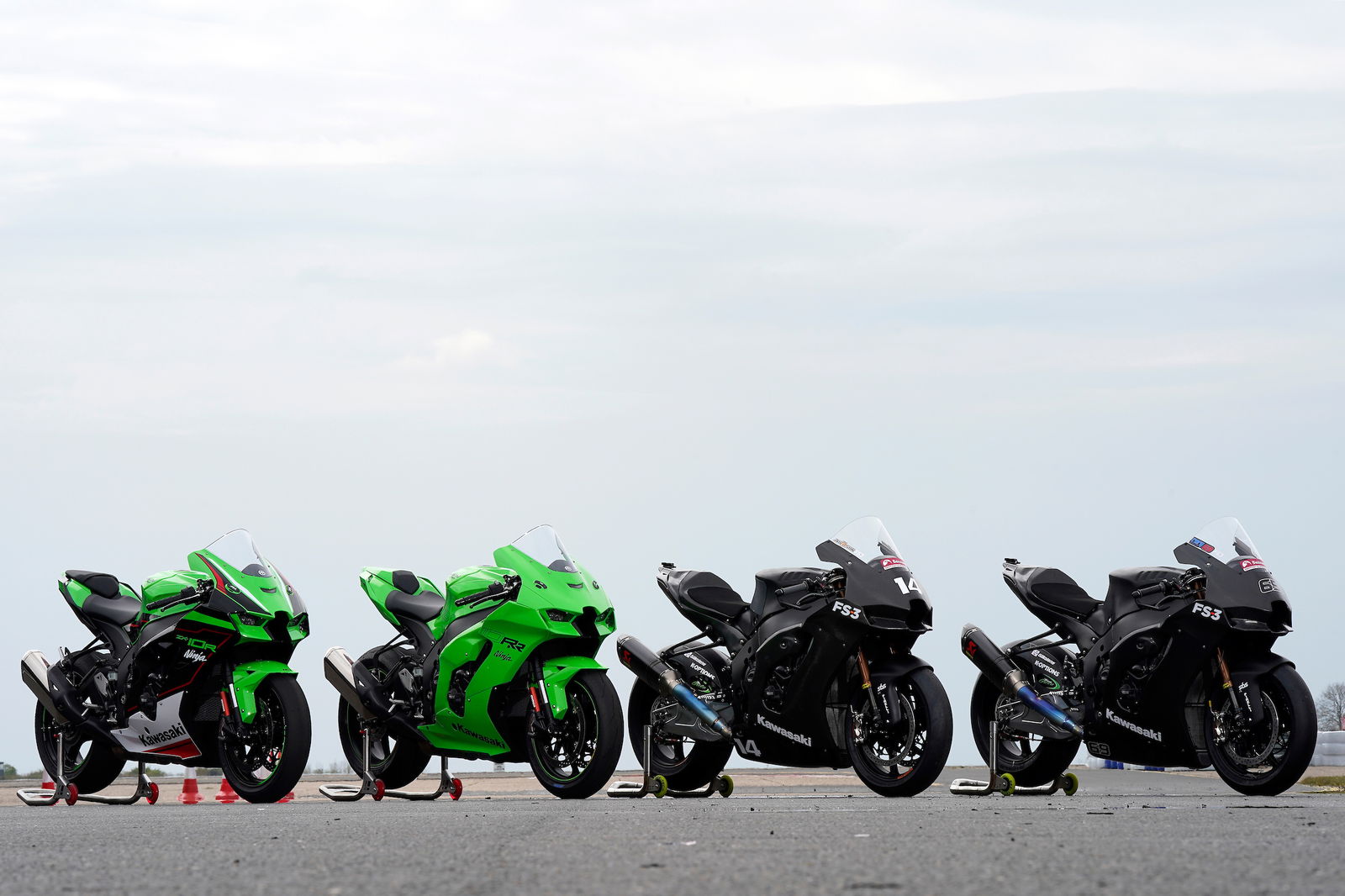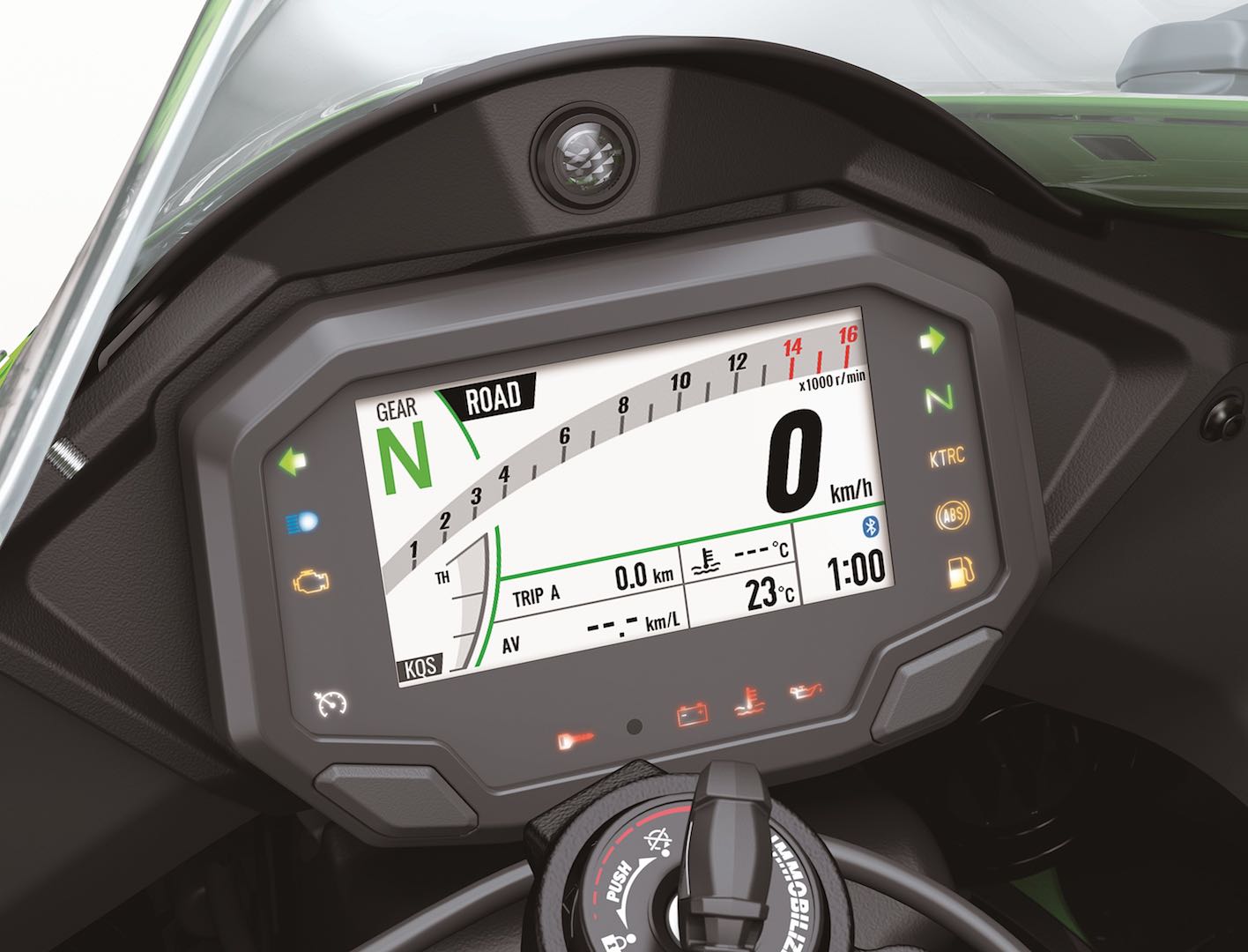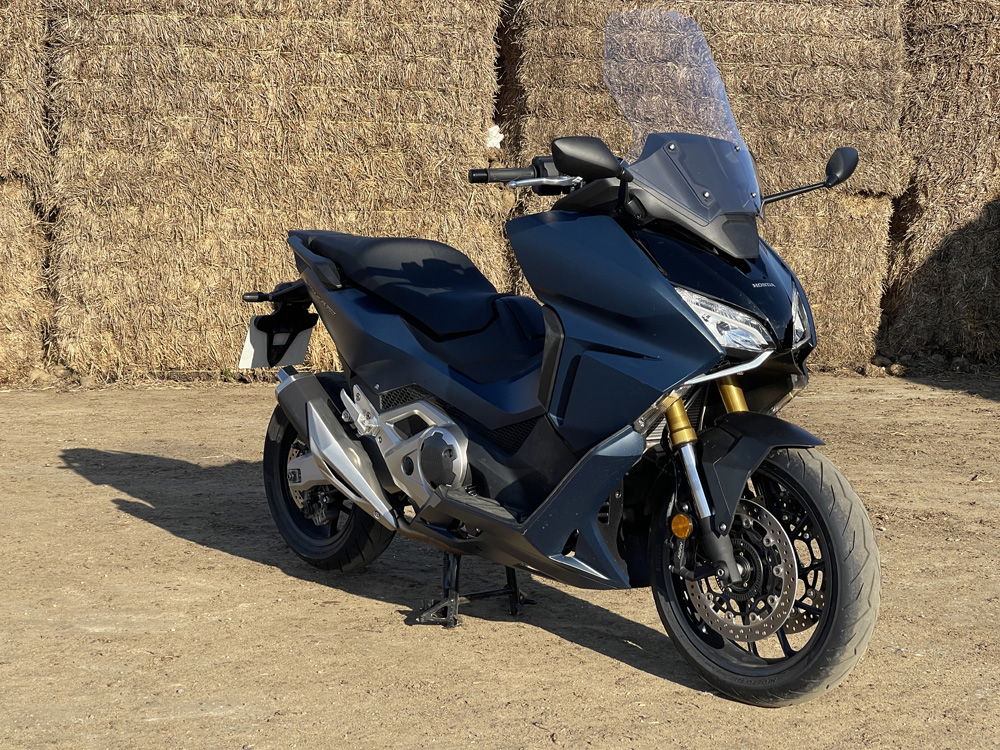2021 ZX-10R and ZX-10RR review
To find out if all Jonathan Rea’s hard work has paid off, we went along to Bedford Autodrome to test the new 2021 ZX-10R and ZX-10RR.
2021 ZX-10R
.JPG?width=1600&aspect_ratio=16:9)
The 2021 ZX-10R represents one of the most transformative changes to the range to date, with internal and external updates that are hoped to help the bike retain its top spot in the WorldSBK pecking order. But will it still be the ultimate B-road weapon with all this WorldSBK input?
The Kawasaki Ninja ZX-10R is a legendary motorcycle in many respects. Be it as the steed of choice for trackday and club racers across the globe, or the bike of choice for weekend blasts across the country.
But it also holds another title, and one that Kawasaki is understandably proud of, as the bike that hold more World Superbike Championship victories to its name than any other – six for Rea and one for Sykes. And as with any successful racing motorcycle, when you lead from the front, there is always a number on your back.

2021 ZX-10R/ZX-10RR pricing and colours
The 2021 Ninja ZX-10R and RR will be landing in dealerships in early June. The R is priced at £15,799 and is available in two colours, Lime Ebony Pearl Blizzard White (as ridden), and Flat Ebony, pictured above. The ZX-10RR is a limited run homologation special with just 500 units produced worldwide. It is priced at £24,799 and is only available in its unmissable Lime Green colour scheme.
2021 ZX-10R PCP example
Model | OTR | Deposit | Duration | Mileage | Payment P/M | Final payment |
ZX-10R | £15,950 | £3235.23 | 37 months | 4000 | £179 | £8,125.00 |
For more information head to: www.kawasaki-kalculator.co.uk
.JPG?width=1600)
What’s new on the 2021 ZX-10R?
For 2021 Kawasaki didn’t go totally back to the drawing board for the ZX-10R, instead preferring to make measured adjustments in the areas that mattered most. And we aren’t talking about engineers arguing with accountants over what should be changed. For the updated 2021 model, Kawasaki used the best test pilot in the business to help shape some of the updates for the new model – a certain Mr Jonathan Rae.
.JPG?width=1600)
Engine
Euro5 has obviously been a big focus for this year, with Kawasaki shifting the catalysts around in the exhaust and gracing the bike with a new oil cooling system to aid emissions and performance. There are masses of WorldSBK learning in the new engine too, from the machining techniques used in creating the unit, DLC coatings on the internals, and finger-follower valve actuation.
The new bike makes a claimed 203ps (200.2bhp) at 13,200rpm and 84.7lb-ft at 11,400rpm. Power rises to 210bhp thanks to the revised ram air intake in the bike’s nose. The numbers on paper tell a similar story to the old model, although there is more at work here than simply producing the most amount of power available. Kawasaki has refined the delivery of the new bike, making the torque curve much smoother and more manageable than before. The delivery is perfectly linear, without any of the strangulations that can sometimes be felt. It made picking up the throttle on the corner exit a much more secure affair, with the buttery-smooth delivery firing you out towards the next corner.
.JPG?width=1600)
Internally the gearbox has also been updated, but unlike some of the other changes, most of which are designed to help the bike achieve WorldSBK glory, the changes to the cogs should make it a better bike for general road and trackday riding. The rear sprocket (41T) and revised 1st, 2nd, and 3rd gear ratios relate to much more immediate shove off the line. This coupled with the smoother more linear torque delivery was one of the first elements of the new bike that I noticed pulling out on the Bedford Autodrome circuit.
.JPG?width=1600)
Chassis
Another element of change that became instantly evident on the track was the chassis and suspension updates. The previous generation ZX-10R felt noticeably slower to turn in, and it’s not like it was a slouch to start with. Despite making the 2021 model slightly longer, 1440mm to 1450mm, the new bike feels sharper steering, more planted once you are in the turn, and with a front end that’s full of feedback from the rippled and fairly bumpy track. The bike pitches more than before on the brakes, thanks to a slightly stiffer rear spring and softer front fork. The new base settings are another recommendation from Mr Rea, and it ensures a clean and measured transference of weight onto the front wheel. This not only provides you with stunning stability on the brakes, but it also allows you to drive the front tyre into the surface of the track, making the most of the new for this year Bridgestone RS11 hoops.
The swingarm pivot is now 1mm higher than before, and the whole swingarm is 8mm longer. Both are designed to aid stability on corner exit, and the bike did feel less likely to squat or porpoise thanks to it.
Braking hardware is the same as the previous model, meaning you have Brembo M50 calipers at the beck and call of your right hand. The electronics governing the retardation and Kawasaki’s KCMF (cornering ABS and TC package, and the KIBS ABS.

Aerodynamics
The biggest talking point of the new bike when launched was understandably relating to the styling and that distinctive looking fairing. And there is more at work here than simple model differentiation. The new angular, almost H2-a-like front end provides the 2021 Kawasaki Ninja ZX-10R with a claimed 16 percent more downforce than the previous, more classic-looking fairing. Kawasaki shunned the idea of outboard winglets, instead mounting the aero elements within the fairing. Air is channelled in through the slots on the outside of the headlights, releasing the air upwards on the rear of the fairing.
.jpg?width=1600)
As mentioned above, the front-end stability of the bike in pretty much any situation feels stunning. Whether I was on the brakes, slowing from 170mph on the long back straight, or firing out bumpy slower turns, the Kawasaki possesses a level of sure-footedness that many Euro sports bikes can only ever dream of. Now, I’m not professing to be able to put my finger on exactly where the aero is working or not, but I am sure a 16 percent downforce increase, coupled with the suspension and chassis updates, is translated into a significant jump in front end performance.

Equipment
All the bikes in the 200bhp sports bike class come equipped with top-spec, race-bred electronics, although few will leave you much change out £20k. The new 2021 Kawasaki Ninja ZX-10R has every element you’ll ever need for road and track riding tucked away in its sizable armoury. The most noticeable of which is the imaginatively named Kawasaki Cornering Management Function (KCMF). It’s a kind of one-stop-shop for high-speed cornering prowess, and encompasses the electronic brake and power control, and is continually monitoring the bike’s chassis through the entire corner.
.JPG?width=1600)
Now, I have already mentioned that Bedford has some sizeable bumps and ripples out on the southwest circuit. The venue is home to a race school for high-downforce mini Le Mans cars. They cause some interesting ripples on the track, and all of them right where you don’t need them to be. While the KCMF doesn’t eliminate the bumps, it does let you focus on the riding, allowing the box of advanced algorithms to sort out the delivery to the rear wheel.
Another noticeable change for the new 2021 Kawasaki Ninja ZX-10R, and one that fans of the previous generation 2019 ZX-10R will be happy with, is the introduction of Kawasaki’s class-leading TFT dash. I’ve been a fan of this setup since it was introduced on the 2020 Kawasaki Z900. It’s super clear, easy to read, and has all the information you need without being fussy or clustered – other manufacturers take note!
.JPG?width=1600)
2021 ZX-10RR laps
Midway through the day, I was given the chance to stretch the legs of Kawasaki’s limited run homologation special, the Lime Green beast that is the ZX-10RR. The ‘Double R’ tag normally means double hard, but that might not be the case. Yes, the RR is the racier version of an already racy motorcycle, but my feeling after just a handful of laps on the bike is that it builds speed faster than the stocker, allows you to take bigger liberties on the brakes, and is much nimbler thanks to the extensive weight saving. Sadly, my session on the bike was curtailed by the onset of some light rain after just a few short laps. Not wanting to be the one who flung one of the only double RRs in the country up the road, I handed it back in and said my thank yous!
.JPG?width=1600)
Should you buy the 2021 ZX-10R?
If you began reading this review expecting the latest generation ZX-10R to have become some overly stiff and unforgiving race bike with number plates, good because that’s what I was expecting after the press conference before we hit the track. But what Kawasaki has done with the latest generation bike, with the help of Mr Rea, is create what I think might be the best ZX-10R for not only the track day and circuit-riding elite, but for the everyday, middle of the road rider too. The new bike has a performance envelope that doesn’t require the ability of a semi-pro racer to unlock it, and it’s still entertaining, exciting, and sometimes challenging to ride.
.JPG?width=1600)
Granted, there are some concessions to the gods of speed, the lower body ergonomics are slightly more aggressive, and the rake of the seat slightly steeper than before. But on the other hand, the screen is 40mm taller, the cockpit roomier, and the suspension more compliant without losing any of that winning edge.
Kawasaki has once again proved that you can build a class-leading sports bike, that’ll tick the win on Sunday, sell on Monday mantra, without causing a marriage breakup in the process.
.JPG?width=1600)
2021 ZX-10R specs
ENGINE | |
Type | Inline-4 |
Displacement | 998cc |
Bore x Stroke | 76.0 x 55.0mm |
Compression ratio | 13.0:1 |
Fuelling | EFI w/ four 47mm Mikuni throttle bodies w/ oval sub-throttles; two injectors per cylinder |
Valvetrain | DOHC, 4vpc |
Ignition | TCBI with digital advance and Sport-Kawasaki Traction Control (S-KTRC) |
Transmission | 6-speed, return shift |
Clutch | Wet multiplate w/ slipper function |
Final drive | Sealed chain |
ELECTRONICS | |
Electronic Cruise Control Kawasaki Launch Control Mode (KLCM) Kawasaki Intelligent anti-lock Brake System (KIBS) Kawasaki Sport Traction Control (S-KTRC) Kawasaki Engine Braking Control Kawasaki Quick Shifter (KQS) (upshift & downshift) Kawasaki Corner Management Function (KCMF) | |
CHASSIS | |
Front suspension; travel | Fully adjustable Showa BFF inverted 43mm fork |
Rear suspension; travel | Linkage-assisted fully adjustable Showa Balance Free piggyback reservoir shock |
Tires | Bridgestone Battlax Racing Street RS11 tyres |
Front tire | 120/70 x 17 |
Rear tire | 190/55 x 17 |
Front brakes | 330mm semi-floating discs w/ Brembo monoblock 4-piston calipers |
Rear brake | 220mm disc w/ aluminum single-piston caliper |
ABS | Yes |
DIMENSIONS and CAPACITIES | |
Wheelbase | 1450mm |
Rake | 25.0 degrees |
Trail | 105mm |
Seat height | 835mm |
Ground clearance | 135mm |
Fuel capacity | 17l |
Curb weight | 207kg |
.jpg?width=1600)

